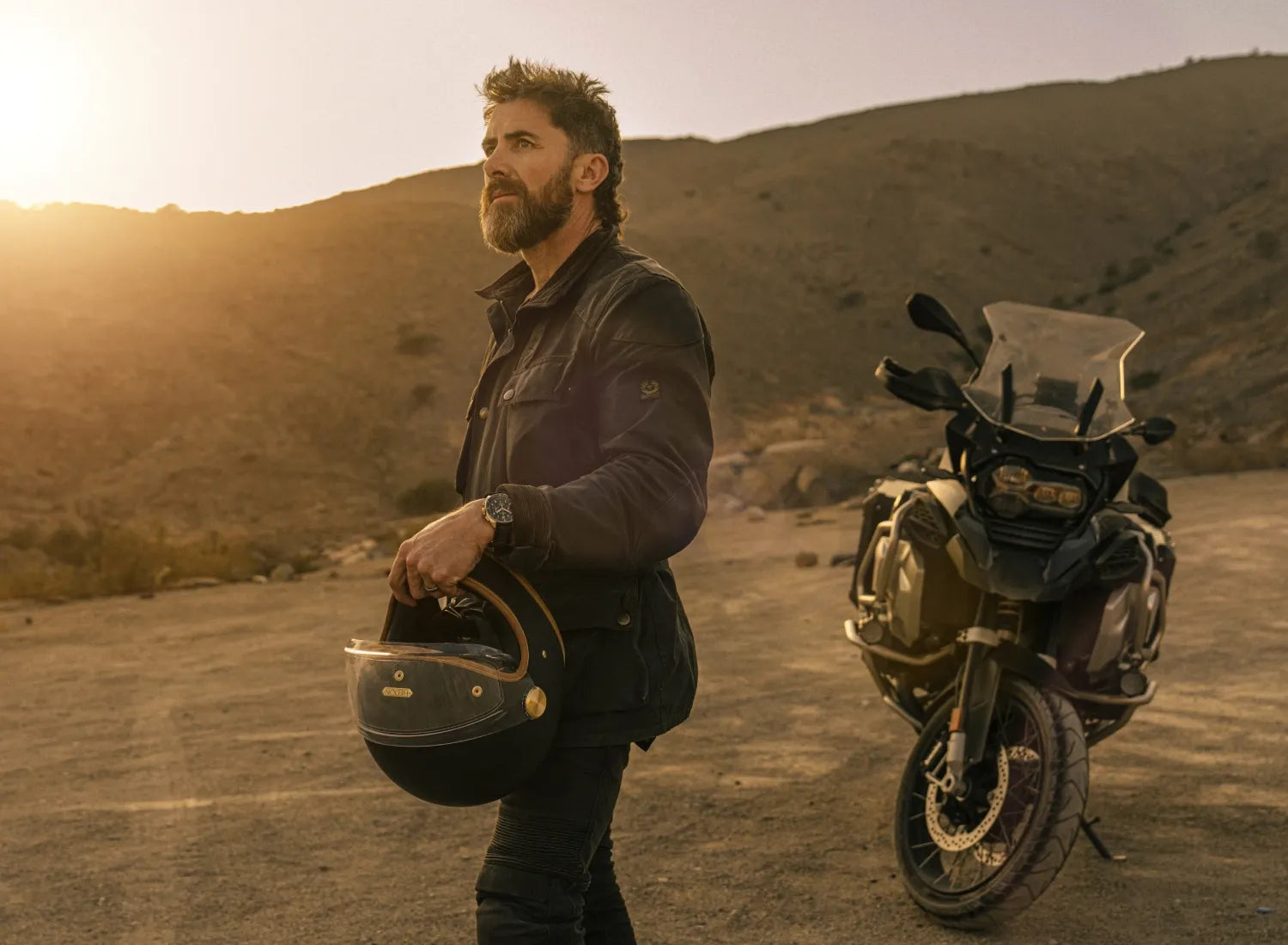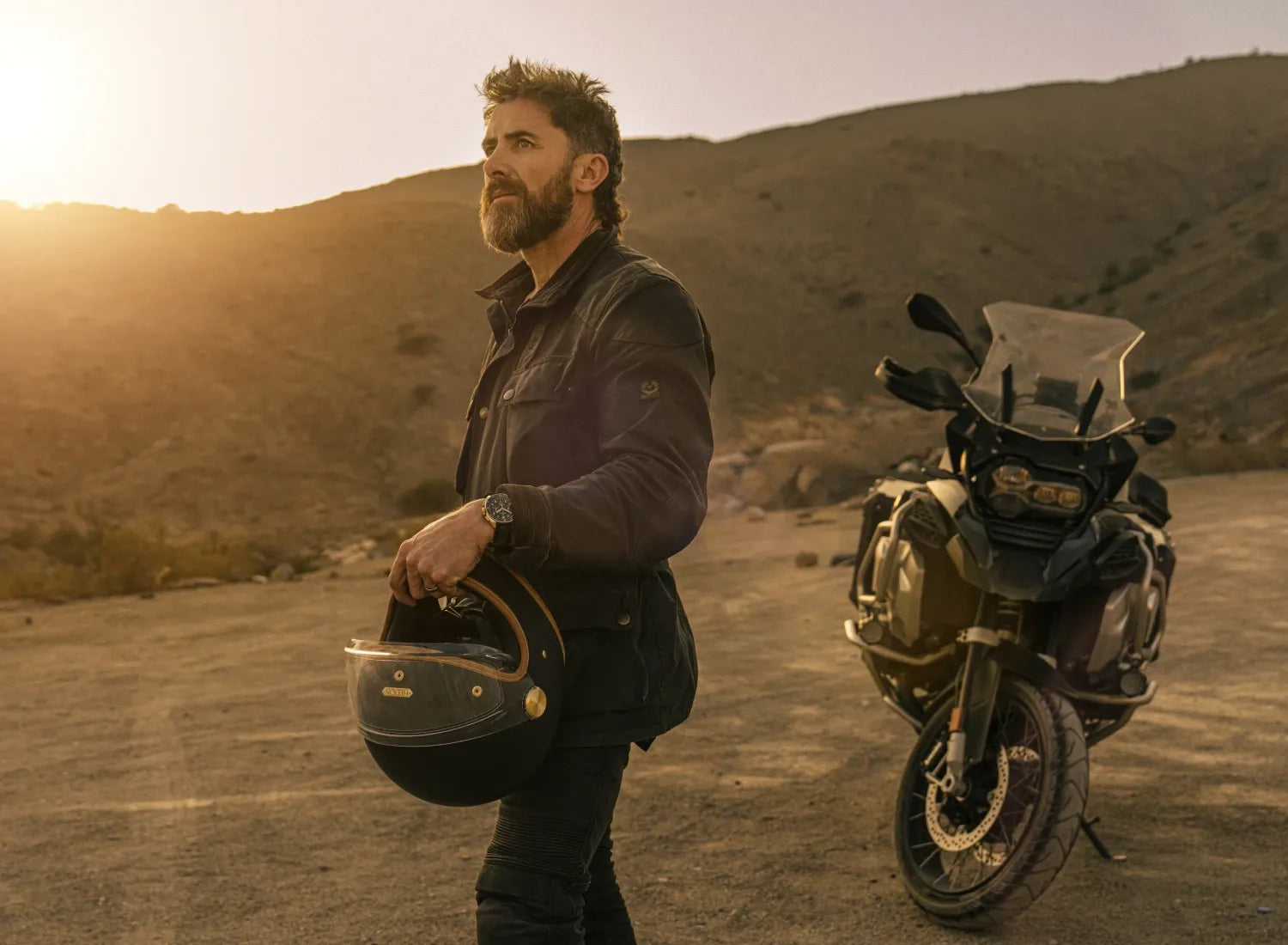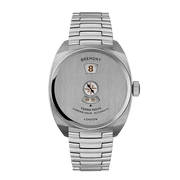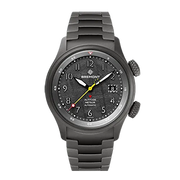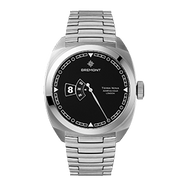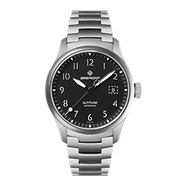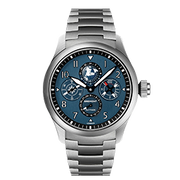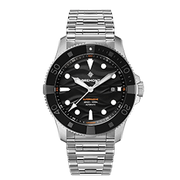At Bremont, our core principles of aviation & military, British engineering, and adventure provide us ceaseless inspiration. The story of the Supermarine S6.B, the aircraft that inspired the Spitfire, perfectly encapsulates them all.

Sleek, powerful and extremely fast, the Supermarine S6.B was an exceptional aircraft with a significant legacy. Powered by a state of the art Rolls Royce engine and flown by RAF pilots, this record-breaking beast came from the drawing board of legendary aircraft designer R J Mitchell. The S6.B secured glory for Great Britain at the prestigious Schneider Trophy contest in 1931, a victory that only took place thanks to the unusual intervention of an eccentric and outspoken widow. Later that decade, RAF pilots would fly Supermarine aircraft again, this time in defence of British skies.
A delicate winged figure cast in silver swoops down to kiss a zephyr reclining on a silver breaking wave. Bronze octopus and crabs surround the sculpture, atop a sizeable marble mount. This decadent depiction of speed conquering the elements of sea and air sits upon the Schneider Trophy, illustrating what competitors did to win this prestigious award.
Conceived by French financier Jacques Schneider in 1912, the contest was designed to encourage development of commercial air travel. It quickly became about speed. Open to seaplanes and flying boats, entrants competed in time trials over a 217mile course. Any nation to win the race three times in five years would claim the trophy for good and end the contest.
Initially the competition was a European affair. The French won at the first event in 1913 with an average speed of 45mph. After a hiatus during World War One, the Italians looked set to seize the trophy permanently until British company Supermarine came first in 1922 with their Sea Lion II flying boat. Then America entered the fray. With government funding and a highly organised team, they easily took victory in 1923. Knowing that something special was required to contest the Americans, Supermarine’s R J Mitchell set to work designing the S4. Mad about aircraft since childhood, Mitchell’s career began designing locomotives. He joined the Supermarine Aviation Works in 1917 where his talent was quickly recognised. Two years later, aged just 24, he was appointed Chief Designer. A shy but stubborn character, Mitchell inspired great admiration amongst his colleagues.
The S4 was a radical departure from Supermarine’s previous designs, and evidence of the company’s faith in Mitchell. Departing from traditional biplane design, the S4 was a sleek wooden monoplane on floats with cantilever wing that lacked the drag inducing struts or braces seen on biplanes. It was Mitchell’s first design move towards what would ultimately become the Spitfire.
Unfortunately the S4 did not compete in 1925. After developing a severe aileron flutter in pre-race trials, it crashed in Chesapeake Bay. The contest became one of aviation’s greatest spectacles with aircraft, purpose built for the race, reaching unprecedented speeds. As government involvement increased, the stakes were raised. Mussolini saw the perfect opportunity to showcase the power of fascism, declaring that Italy should win at all costs. With virtually unlimited resources, Italian aircraft company Macchi took victory in 1926.
The American government grew tired of funding expensive race planes and the French had fallen behind in the development race. The 1927 event was a battle between Supermarine and Macchi. The RAF set up a High Speed Flight to provide pilots for the Schneider Trophy racers. With Air Ministry backing, Supermarine’s all-metal S5 triumphed in Venice. The next event was in 1929 and vast crowds arrived at Calshot on the English south coast to see Supermarine roll out the S6, which boasted the addition of a supercharged Rolls Royce R engine. The Italians struggled with an engine prone to overheating enabling Supermarine to secure their second consecutive win with an average speed in excess of 238mph. Ultimate victory for Great Britain was now just one race away.
After the 1929 victory, Prime Minister Ramsay McDonald announced, ‘We are going to do our level best to win again’. There was considerable shock later when, feeling the strain of the Great Depression, the socialist government refused to support the 1931 race. A Daily Mail headline summed up the mood: ‘If we let the Schneider Trophy go aeroplane trade will go too. Government blunder. Public astounded’. Without Air Ministry support and funding, Supermarine could not field an entry. So close to winning the Schneider Trophy outright, Great Britain now faced the humiliating prospect of hosting the event without competing.
Enter Lady Lucy Houston, the richest woman in the country. The widow of Sir Robert Houston, she was eccentric, patriotic and pro-aviation. Above all, she hated socialists. Determined that British pride should not be dented, she delivered a cheque for the £100,000 required to run the race. The government grudgingly accepted her donation and the competition was on. Her generous and timely intervention ensured the Schneider Trophy remained on British shores and enabled continued development of the S6. Not only did she rescue the Trophy, but some also consider her the ‘Saviour of the Spitfire’.
Supermarine and Rolls Royce had only seven months to prepare their entry for the 1931 contest. With no time to design a new aircraft, Supermarine developed and built two S6.Bs: a larger, more powerful and drag reduced version of the S6. Now giving 2,350hp, the engine was built to survive the race, and ‘lifed’ for just one hour. To prevent overheating, the pilots kept a careful eye on the water temperature at all times. Mitchell described the S6.B as a ‘flying radiator’, as every available space in the wing and float surfaces contained water radiators to cool the powerful engine. Fuel tanks were placed in the floats with fuel pumped up through the struts to a small header tank feeding the carburettors, which ensured the engine was still fed during turns.







